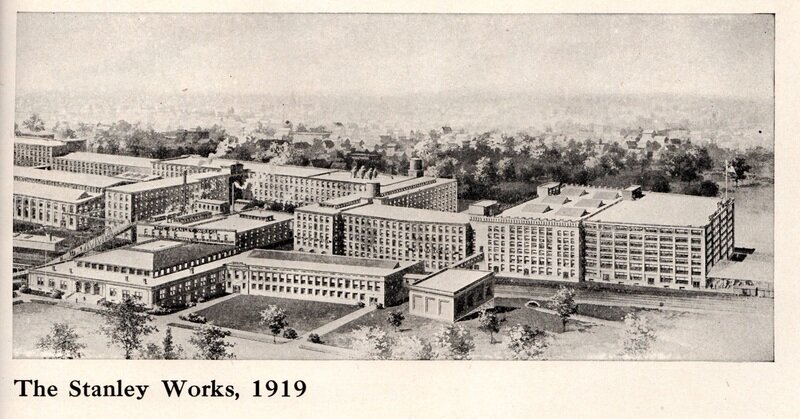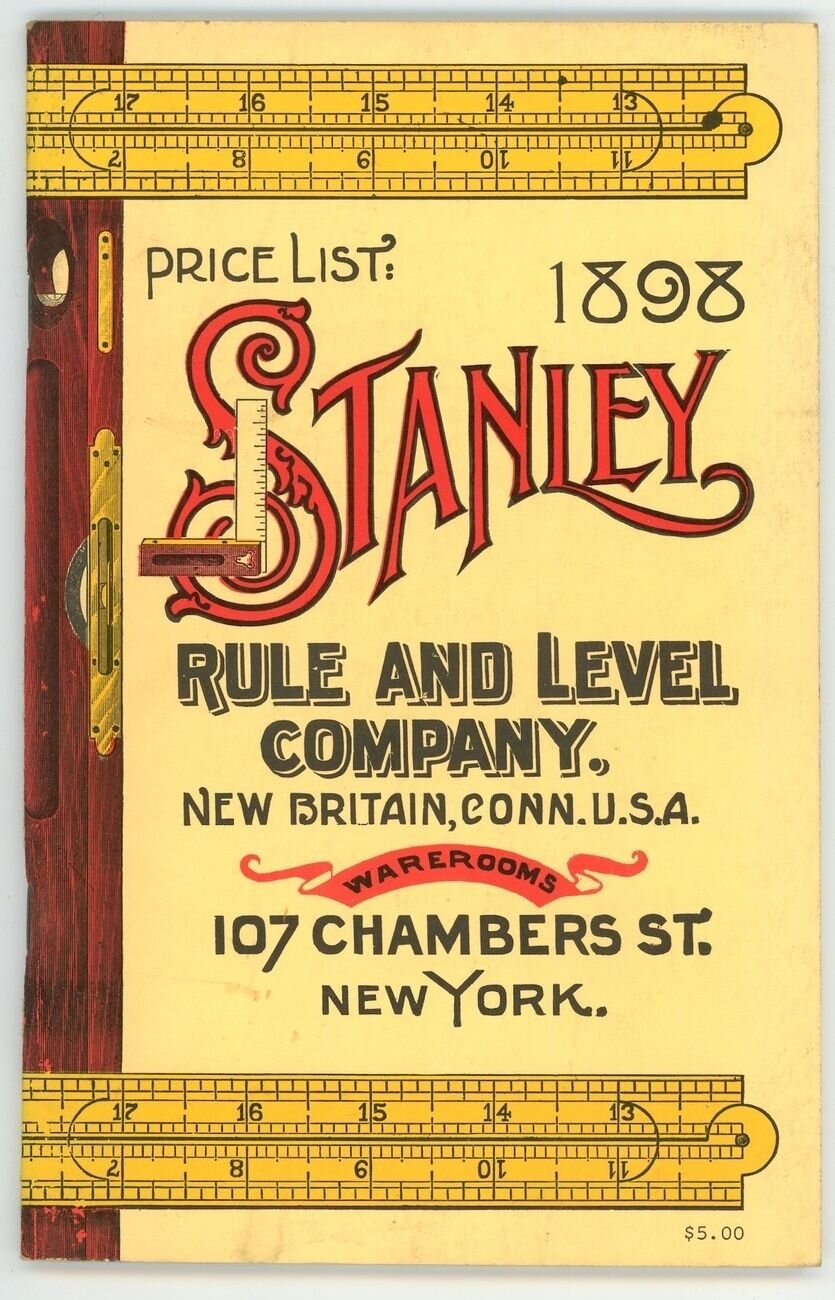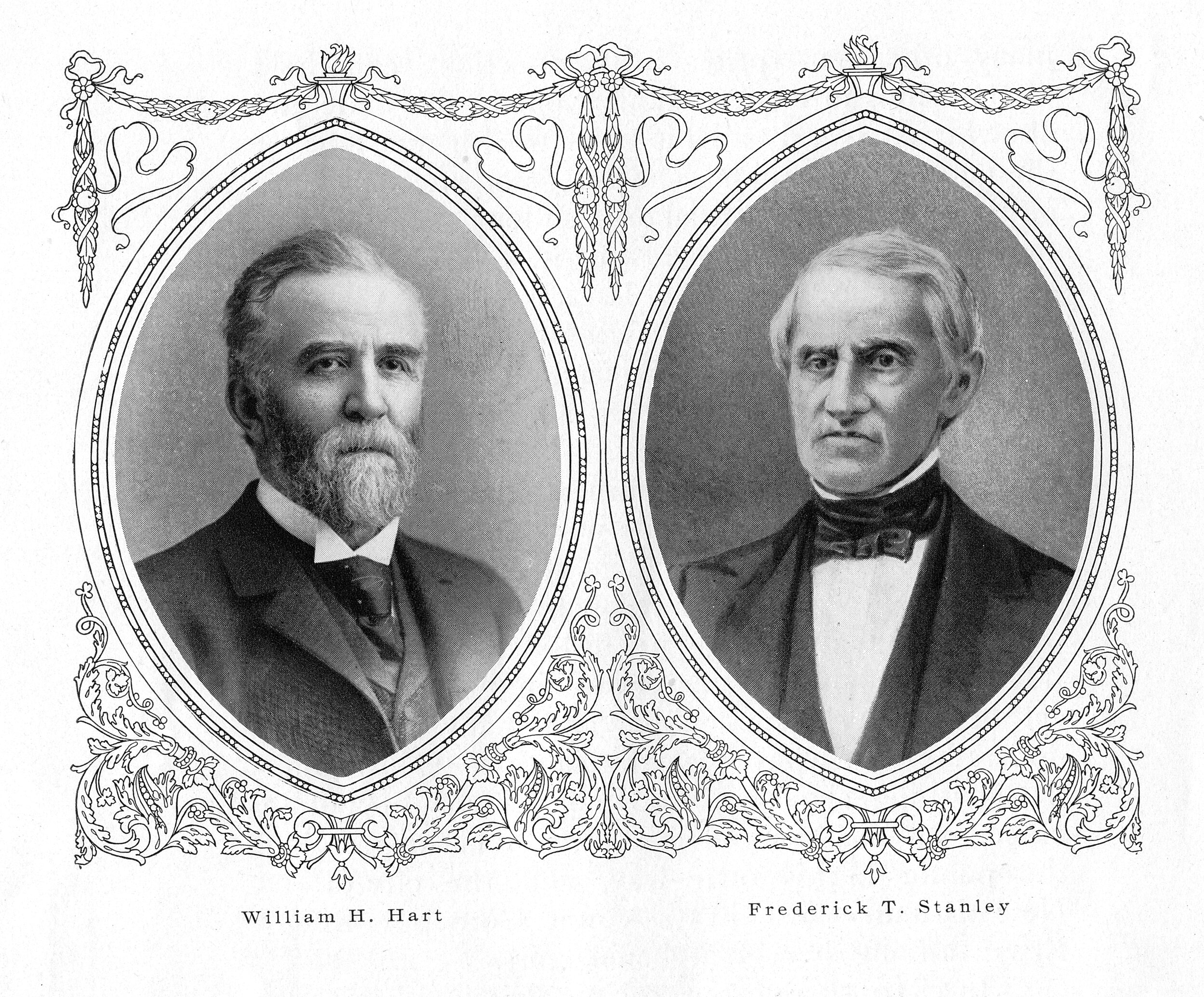Stanley Works
1898 Stanley Rule and Level price list, NBIM digital archives.
Portraits of William H. Hart and Frederick T. Stanley, NBIM digital archives.
THE WORLD BUILDS WITH STANLEY TOOLS AND HARDWARE
The modern Stanley Works, known to us today as Stanley Black & Decker, got its start as two separate companies: Stanley Works and Stanley Rule & Level. In 1920 Stanley Works purchased Stanley Rule & Level and ran it as the Stanley hand tool division for many years. Stanley’s business, and business practices, extended beyond Hand Tools and Hardware; they developed or purchased sources of raw material, generated hydroelectric power to supplement their needs, diversified their product lines and businesses through the purchase and assimilation of other companies and located plants strategically worldwide to better serve their growing international business. A great source for additional information on the history of both the Stanley Works and Stanley Rule & Level is “The Legend of Stanley: 150 years of the Stanley Works” by Jeffrey L. Rodengen.
STANLEY RULE & LEVEL
Organized as a joint stock company in 1857, Stanley Rule & Level was the result of bringing together the New Britain companies of Hall & Knapp (manufacturers of plumbs, levels and squares; incorporated 1853) and the A. Stanley Company (established in 1854 to manufacture rules). The company manufactured rules of all kinds (ivory, boxwood, brass and steel to be used in industries of all kinds), levels and squares. In 1869 Stanley Rule & Level purchased the machinery, inventory and parts belonging to Leonard Bailey, creator of the Bailey Plane; and moved the entire operation, including Mr. Bailey, to New Britain. The success of the Bailey Plane (from 1871-1876 sales soared from 6,500 to 100,000) encouraged Stanley Rule & Level to expand into the production of hand tools with the result that in 1900 SRL was not only the largest American manufacturer of rules, levels and marking devices but the largest manufacturer of planes and related tools as well. In 1920, Stanley Rule & Level was purchased by Stanley Works, becoming known as the Stanley Tools Division in 1937.
STANLEY WORKS
Frederick Stanley, like most New Britain entrepreneurs, was involved in a number of businesses with different partners before he and his brother William established, in 1843, Stanley’s Bolt Manufactory to produce wrought-iron door bolts and handles for doors and chests. With the success of the Bolt Manufactory, the Stanley’s decided to expand into casting and forging other types of hardware such as hinges, hooks, chains. Believing that two smaller companies were less risky than having one large company (in case the new venture failed) the Stanley brothers, along with other investors, incorporated the Stanley Works in 1852 as a separate entity from the Bolt Manufactory. The new company lost money the first year and it was decided something needed to be done; so in 1854 Frederick Stanley hired 19 year old William Hart with the promise that if he did well he would be promoted to secretary/treasurer of the company. In a few short months the promise was kept and the directors, impressed with his skill and hard work, appointed the young William Hart secretary/treasurer of the Stanley Works. Over the next 60 plus years William Hart laid the foundation upon which the success of the Stanley Works was built. Taking a personal interest in all aspects of the company, he worked to create new machinery that gave Stanley the edge over their competition. He created the telescoping cardboard box and not only invented the process for cold rolling steel but was deeply involved with the creation of the process and its early manufacture. During Hart’s lifetime, sales grew from $7,000 to $11.3 million a year. To this day, Stanley continues it’s tradition of innovation, invention and growth through acquisition.



